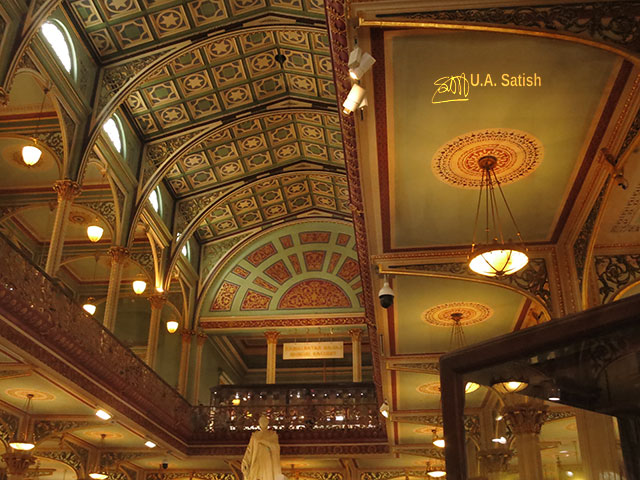
Bhau Daji Lad Museum is in the busy Byculla area of Mumbai. It is next to the botanical gardens and zoo. You can reach it in 3 minutes by walk from Byculla railway station, on the east side. It opened as Victoria and Albert Museum in 1872. It was renamed in 1975 after Dr Bhau Daji Lad who had led its fund-raising campaign. David Sassoon, Jewish businessman and philanthropist, donated the land. Wealthy Indians such as Sir Jamshedji Jeejeebhoy and Jagannath Shankar Sheth were among the patrons.
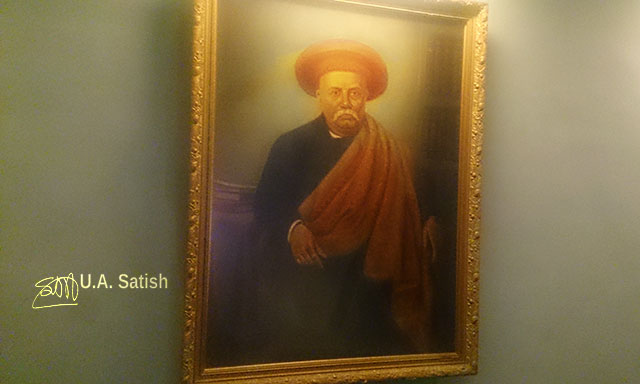
Museum Building
The museum building is in European style with high interiors and Victorian pillars. The imported Minton tiles and the beautiful ceiling takes one back to the masterly craftsmanship of nineteenth century. A massive restoration work took place between 2000-2009. In 2005, the museum overwhelmed Beijing Palace for the coveted award in conservation: UNESCO’s Asia Pacific Heritage Award for Cultural Heritage Conservation.

Ground Floor of Bhau Daji Lad Museum
Ground floor of the museum is dominated by a large marble sculpture of Prince Albert. David Sassoon dedicated it. The dedication is inscribed in five languages at the base of the sculpture. The five languages are Marathi, Gujarati, Persian, Hebrew and English.
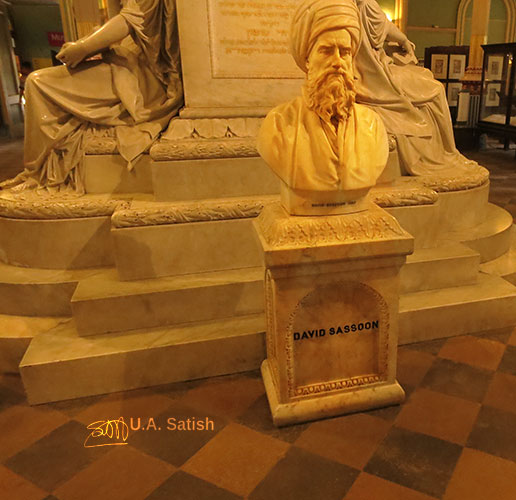
At the foot of Prince Albert’s sculpture is a beautiful marble bust of David Sassoon. He amassed great wealth in Bombay through cotton trade with China and England. He built synagogues, gardens, hospitals, schools and colleges.
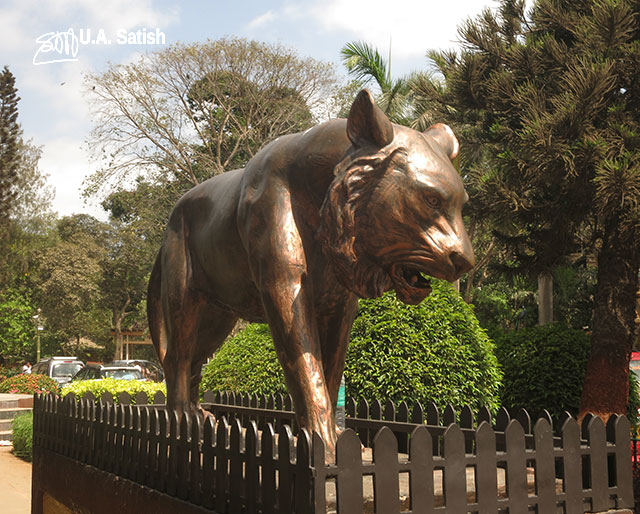
Visitors can see a metal sculpture of a lion in front of the museum building.
Cafe

At the back of the museum is the cafe. It has air conditioning and serves cold drinks and snacks. A TV screen in the corner was showing details of the restoration work carried out at the museum. Adjacent to the cafe are the washrooms and museum shop.

Sir Richard Temple was the Governor of Bombay, 1878 to 1880. When he was leaving India in 1880, a propoal came up to erect a commemorative statue for his 33 years in the Indian Civil Service. Thomas Brock created the marble statue in 1884. First location was the Esplanade, Bombay.
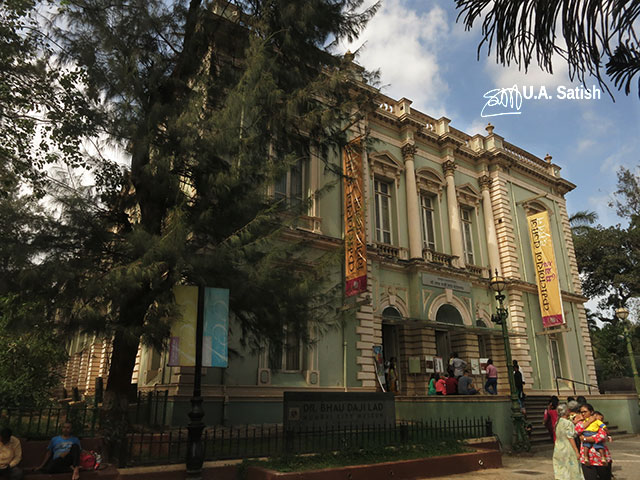
Museum Timings
The museum is open from 10:00 am to 5:30 pm. It is closed on Wednesdays and certain public holidays. Entry fee is Rs 10 for Indian nationals. Phone: +91 22 2373 1234.
Free public tours are conducted on Saturdays and Sundays by a member of the staff: at 11:30 am in English and at 12:30 pm in Hindi/Marathi.

Many of the ancient arts and crafts of India are on display on the ground floor. The museum holds decorative metal ware, bronze sculptures, weapons, fossils and ivory paintings.
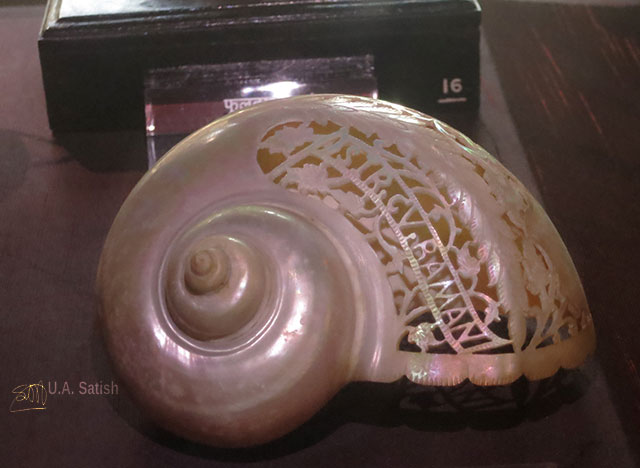
First Floor
The first floor has figurines depicting religions, Indian costumes, armies, lifestyles and much more. The museum contains a large number of maps, old photographs of Mumbai, clay models, archaeological finds, silver/ copper ware and costumes.
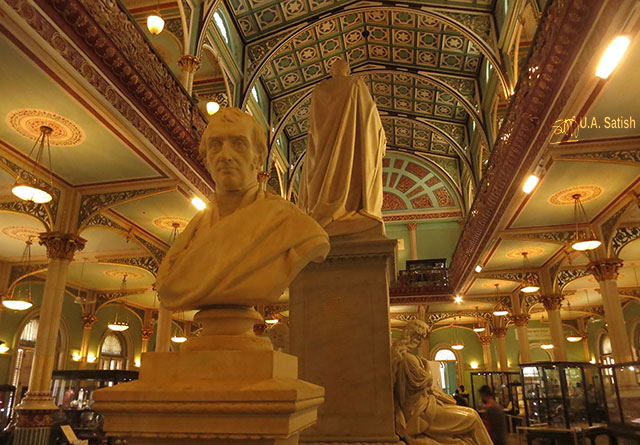
Lord Elphinstone was the last Governor of Bombay while the city was still under the East India Company/ He was in this position from 1853 to 1860. He began the project of tearing down walls of the fort. (Sir Bartle Frere, his successor, later concluded the exercise.) In January 1856, he also started construction of Vihar Water Works.

If you liked the post, you could…
Join more than 5,000 fans of UASATISH by liking us on Facebook, or follow us on Twitter and Instagram.